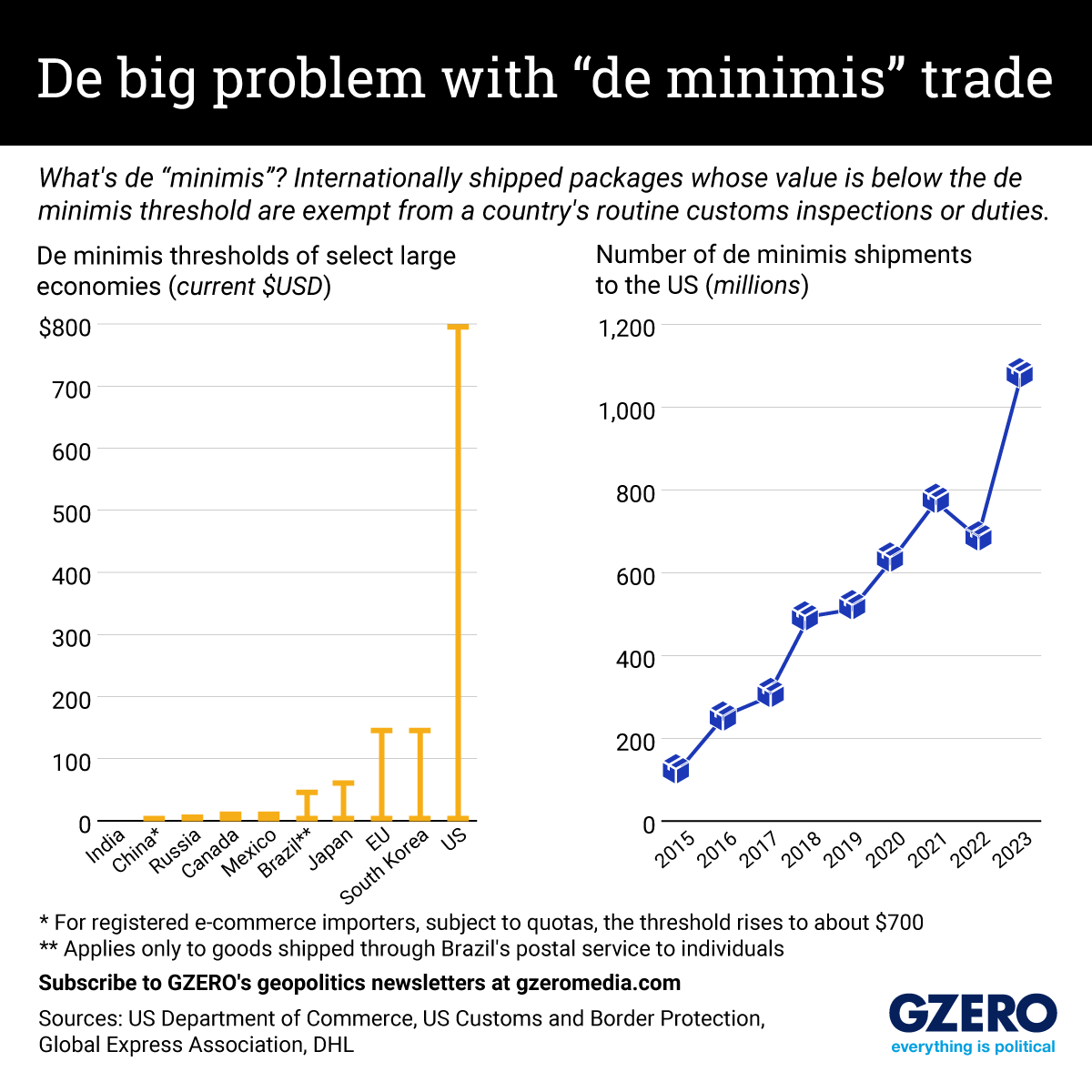December 05, 2024
Small packages are a big problem for the United States these days. A decade ago, the US government raised the so-called “de minimis” threshold on imports from $200 to $800. This means any foreign packages worth less than $800 get no routine inspection or import duties. Translation: The clothes, toys, electronics, and home goods you ordered on Cyber Monday? Many will arrive from abroad in “de minimis” packages.
Supporters of the current threshold say it streamlines trade, particularly in a world in which e-commerce is soaring. But critics point out that the US threshold is way higher than anyone else’s, and that foreign exporters often exploit that to evade import duties and inspections.
Chinese e-commerce exporters in particular use de minimis rules to skirt US tariffs, while drug cartels ship fentanyl to the US in a similar way. Someone even tried to import a helicopter from Venezuela by breaking it up into small packages labeled as “personal effects.”
The Biden administration recently cracked down on Chinese exporters’ abuse of de minimis thresholds, and the incoming Trump administration is certain to hit this issue even harder.
Here’s a snapshot of how the US threshold compares globally, along with a look at the massive rise in de minimis shipments to the US over the past 10 years.
More For You
Most Popular
Fishing boats moored at Taganga Beach, as fishermen express concern over unclear US government videos showing strikes on vessels during anti-narcotics operations, amid fears that those targeted may have been fishermen rather than drug traffickers, in Santa Marta, Colombia, on October 20, 2025.
REUTERS/Tomas Diaz
Walmart’s $350 billion commitment to American manufacturing means two-thirds of the products we buy come straight from our backyard to yours. From New Jersey hot sauce to grills made in Tennessee, Walmart is stocking the shelves with products rooted in local communities. The impact? Over 750,000 American jobs - putting more people to work and keeping communities strong. Learn more here.
© 2025 GZERO Media. All Rights Reserved | A Eurasia Group media company.
